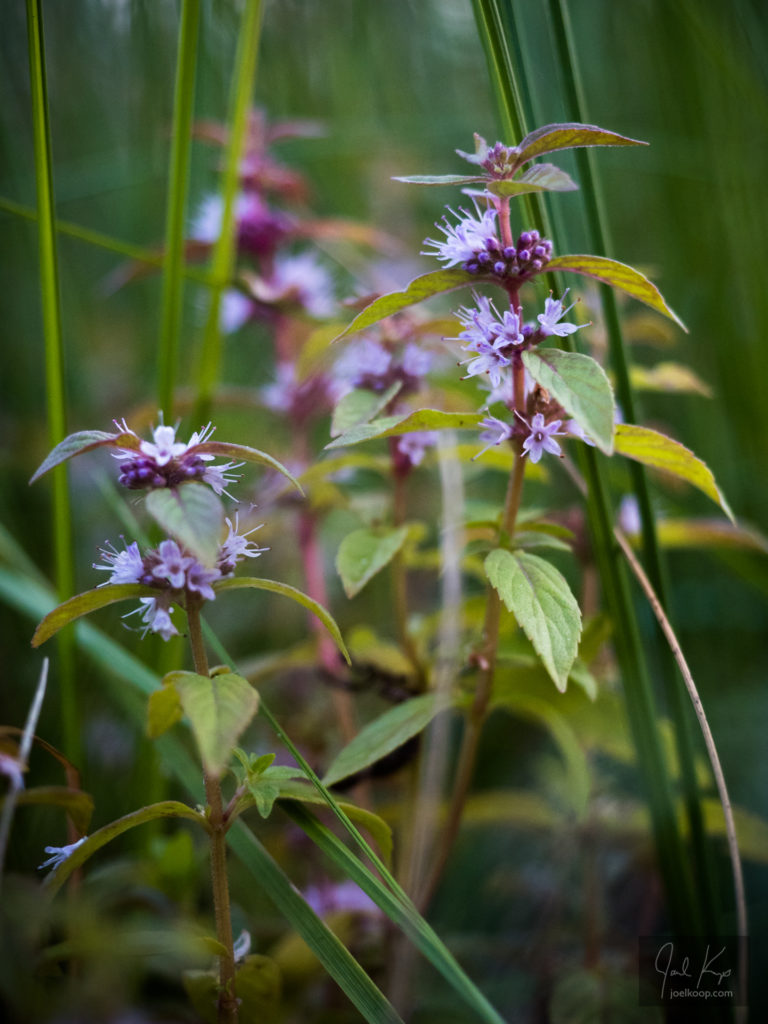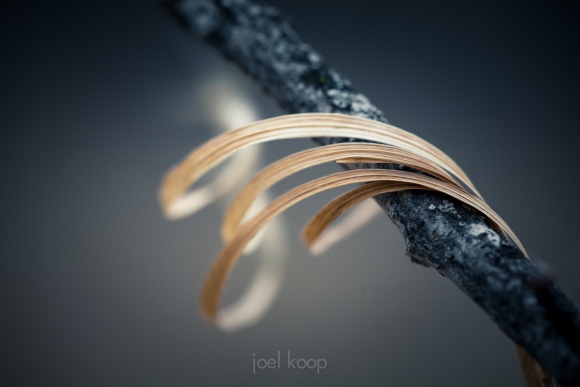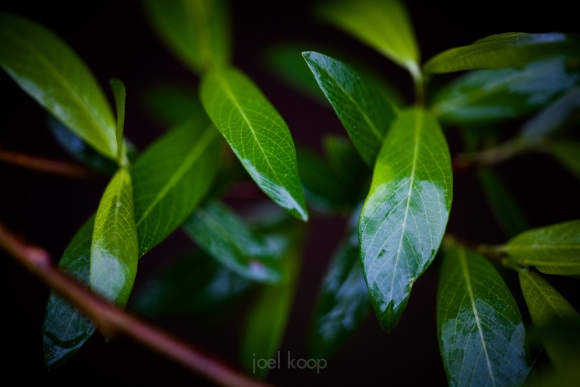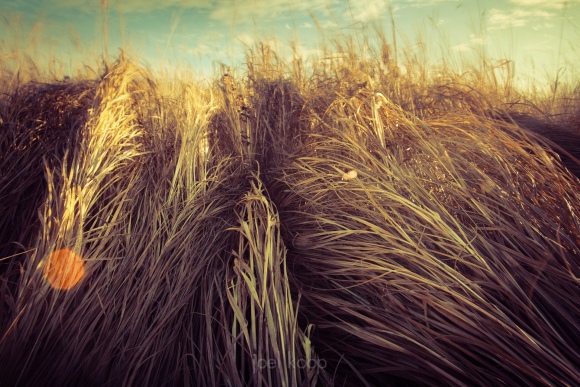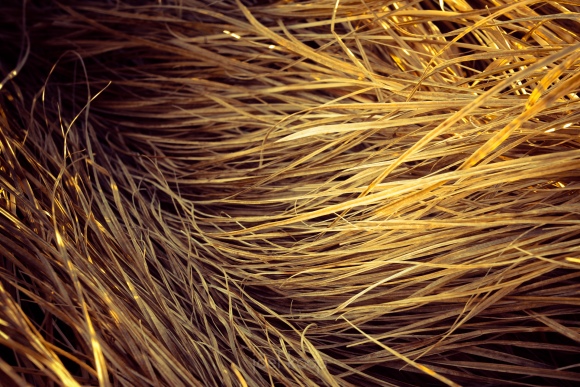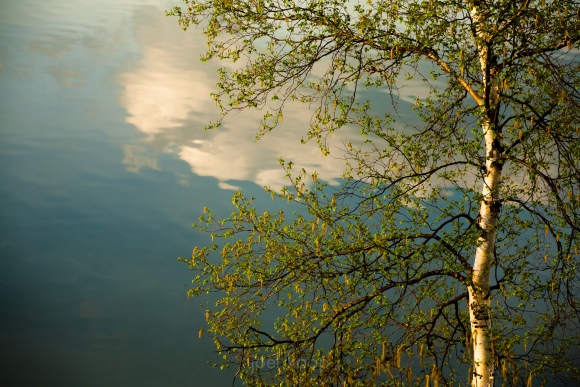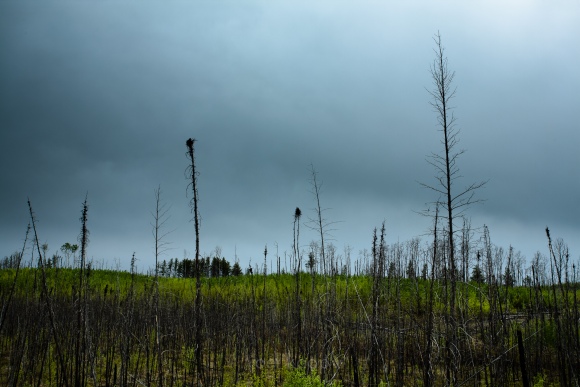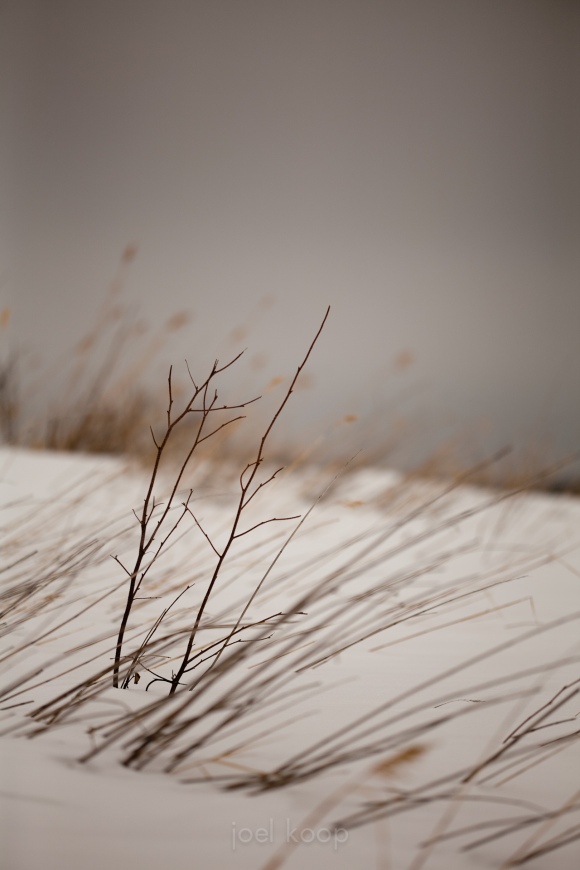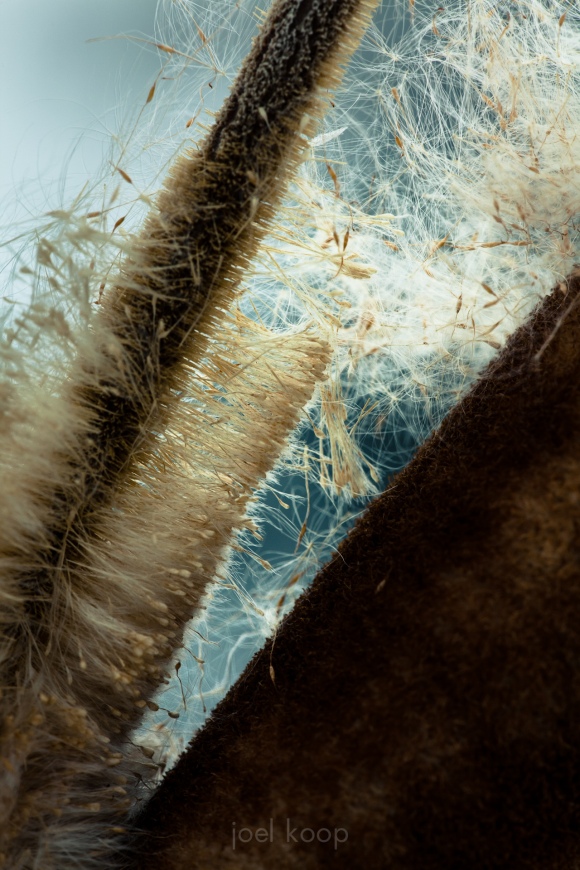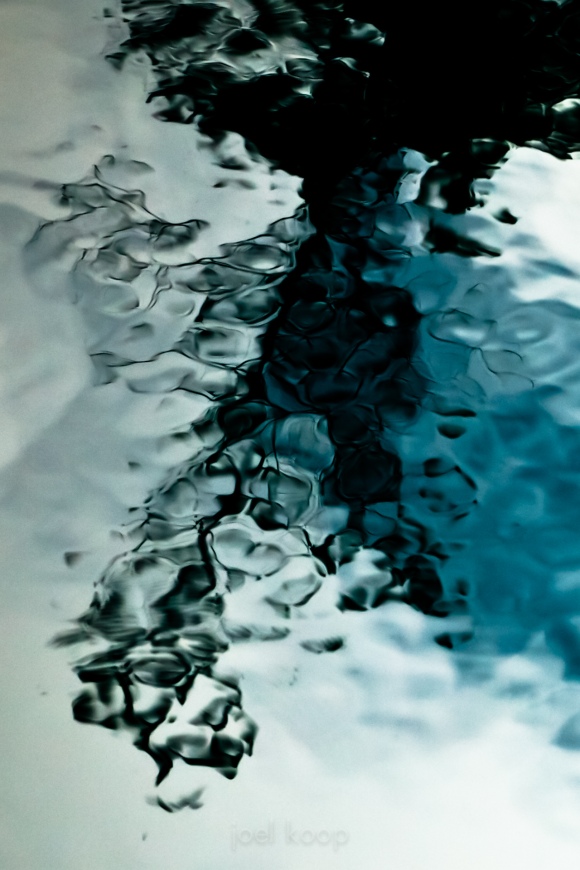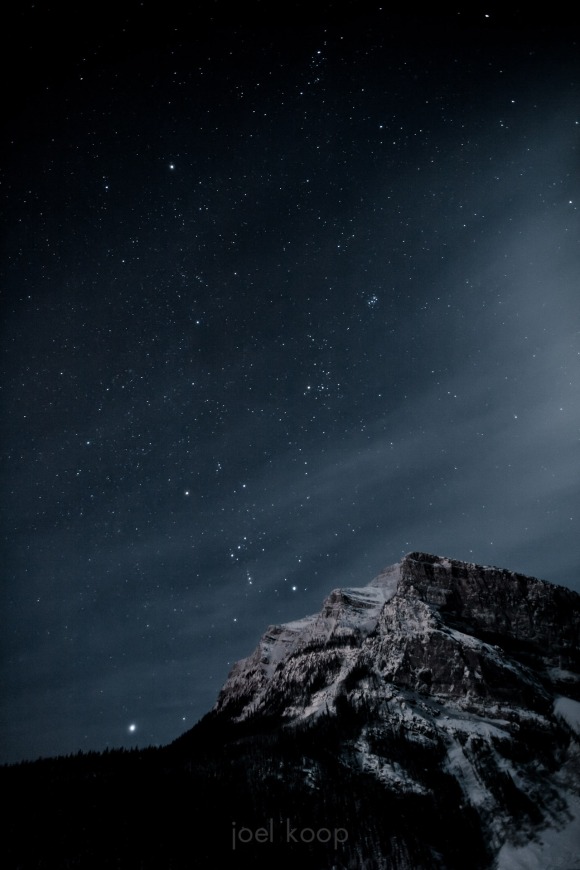I thought people might find it interesting to see some of the plants I regularly come across while hiking. This is wild mint. It is usually found in damp or swampy areas. Sometimes I smell it before I see it but it is especially potent when you pick a leaf and crunch it up under your nose. It is sometimes hard to see from a distance because it is usually shorter than the reeds or grass surrounding it. You can identify it by the smell, but to make sure it’s actually mint, check that it has a squarish stem and the leaves are on opposite sides of the stem. It makes a very nice tea!
Taken near Crimson Lake, AB
40mm, f2.8, 1/60 of a second
